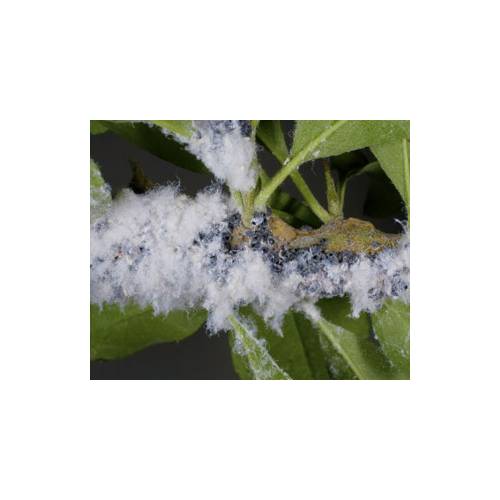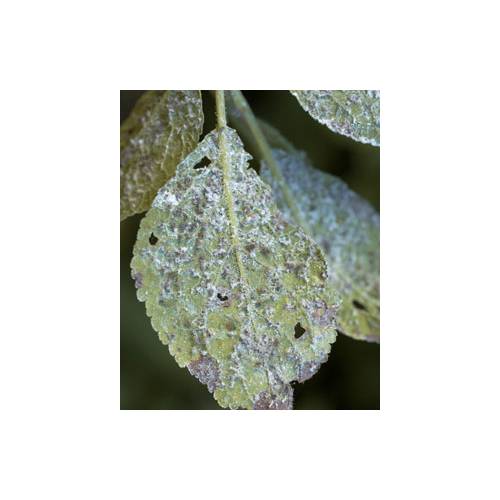
Parasites and insects
Woolly aphids
- Details
-
They are particular aphids which look like a mass of wool. Their presence cause the deformation of branches, especially on apples trees. It is imperative to fight this parasite.
The symptoms
The presence of woolly aphids can be detected by two symptoms. The first one is the sight of a colony, several inches long, full of whitish strands looking like cotton or wool. When colonies have been there for a long time (at least a year), the bark deforms itself, causing corky scabs, which constitute the second symptom. In winter, the deformations become visible even when the woolly aphids have disappeared.
Lifecycle
In our regions, we only have females. They spend the winter in the bark's crevices. In spring, they resume their activity and reproduce at great speed, one female being able to produce hundreds of offspring in one month only. These biting insects on their side deform the stems as they are growing. When woolly aphids have been particularly active, the bark is naked and what we call a canker appears. This open wound constitutes an entry point for other diseases, in particular wood parasite mushrooms or canker spores.
How to fight it
If woolly aphids are present, the priority must be to fight the most important colonies, as they are the ones that are going to cause the most significant wounds to the tree. Paint them using a brush, with cooking oil or methylated spirit. If the bark is already very deformed, cut down the branch to a point where it is free from disease and burn it. After the fall of leaves, spray on a winter oil (an ecological and natural product), by letting it run down the bark, so to smother the wintering forms of these pests. Look closely for an eventual upsurge the following year.
How to avoid it
Dense foliage in which light does not penetrate constitutes an extremely favourable environment for the development of woolly aphids. So think about regularly pruning your apple trees, cutting off branches, which block the centre. A preventative pulverisation of winter oil is beneficial, not only for this pest but for others such as caterpillars, apple sawflies and capsid. The presence of abandoned apple orchards in the neighbouring area encourages greatly the proliferation of woolly aphids; it can be beneficial to prune them, if you can.
Good to know
The woolly aphid must not be mistaken with the apple aphid (Dysaphis plantaginea). The latter has a classical look but is light grey in colour. It is found mainly on leaves and stems. This aphid cause great damage on apple trees by twisting its leaves and making young shoots wither under its proliferation. Nevertheless, it does not cause canker as the woolly aphid does. - Photos (2)


